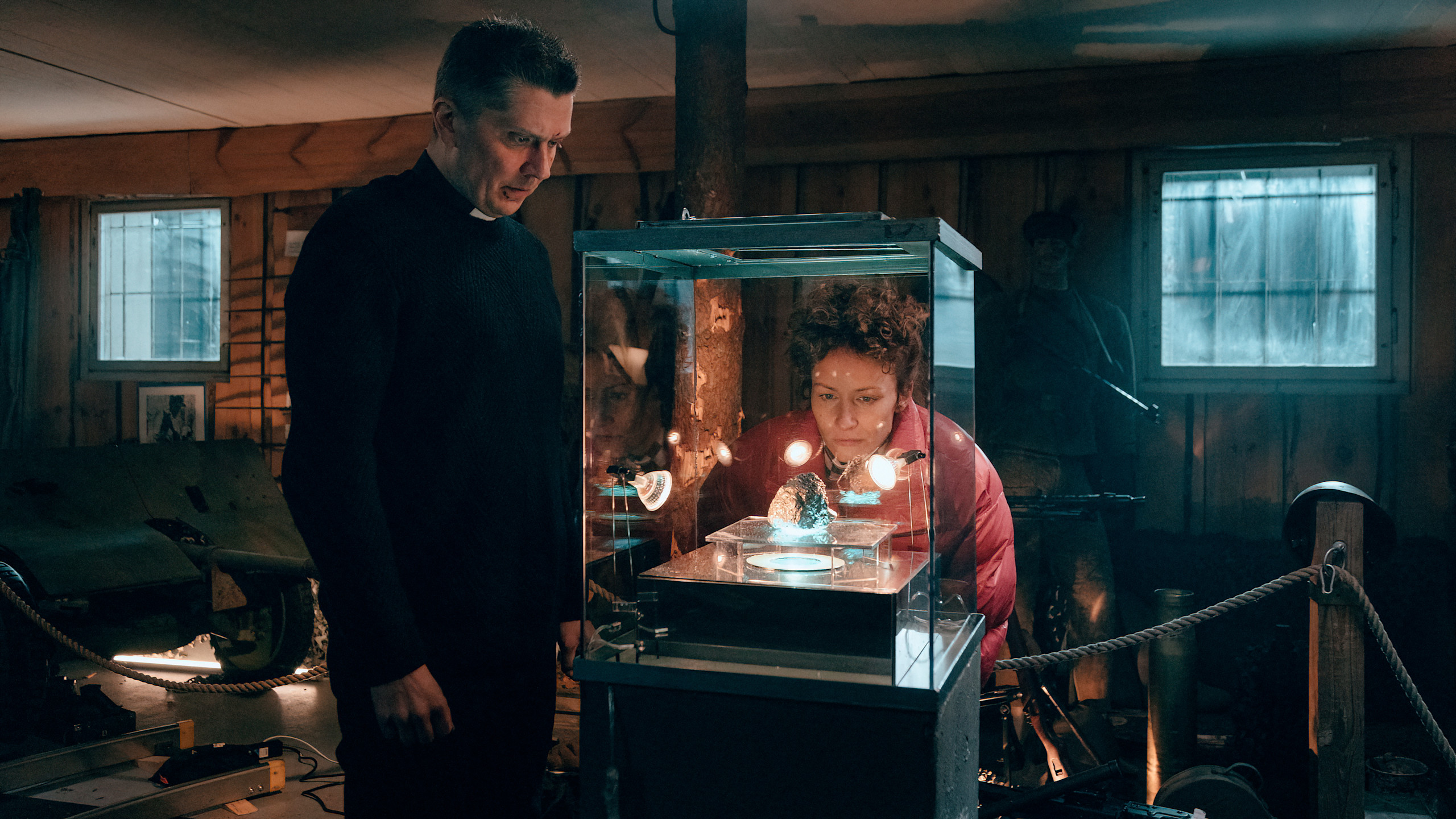Co-written and helmed by Dome Karukoski, ‘Little Siberia’ is a Finnish dark comedy movie based on Antti Tuomainen’s novel ‘Pikku Siperia’ (‘Little Siberia’). The film follows Joel (Eero Ritala), a war veteran-turned-priest whose life takes an unexpected turn when a meteorite crashes into his village. The cosmic rock, rumored to be worth a fortune, quickly attracts criminals, forcing Joel to guard it in an old museum while grappling with his own personal turmoil—his wife’s pregnancy despite his war-inflicted infertility.
Against a backdrop of relentless snowfall and quiet desolation, the crime thriller weaves a tale of greed, faith, and resilience, blending absurdist humor with noir-like suspense. The icy, unforgiving landscape mirrors the isolation and desperation of its characters, making their struggles all the more gripping. ‘Little Siberia’ is an offbeat thriller that explores human nature in the coldest of settings.
Little Siberia Filming Locations
Staying true to its Finnish roots, ‘Little Siberia’ was filmed entirely in Finland, capturing the essence of its small-town landscapes with striking authenticity. Set in the remote village of Hurmevaara, the film embraces the region’s stark beauty, enhancing its atmospheric tension. Filming in their homeland brought a unique sense of camaraderie among the cast and crew, fostering a deep connection to the story they were telling. There was an unspoken satisfaction in working within familiar surroundings, allowing the performances to feel even more organic. Production likely took place in early 2024, and with the dedication of everyone involved, the film was wrapped up efficiently within the same year, a testament to their passion and precision.
Nurmes, Finland
The filming of ‘Little Siberia’ took place in Nurmes in the East Finland region sometime in the winter of 2024. Nurnes is a small town with a population of just over 9000 and is located in North Karelia County. Interestingly, the novel on which the movie is based is set in northeast Finland. It seems the filmmakers, by picking Numbes, wanted to replicate the worldbuilding of the novel itself.
Shooting ‘Little Serbia’ was a test of endurance and precision, with the production team navigating the country’s unforgiving winter terrain while preserving the film’s distinct aesthetic and atmospheric storytelling. Every location was carefully selected not just for its visual appeal but also for its logistical feasibility, ensuring that extreme conditions did not hinder the filming process. One of the greatest challenges was the unpredictability of the Finnish winter. Snowfall patterns could change overnight, daylight hours were fleeting, and subzero temperatures posed both technical and physical obstacles. The cinematography team had to work in sync with natural light, relying on the soft, diffused glow of overcast skies to heighten the film’s cold, isolating atmosphere. Given Finland’s high latitude, the crew had to meticulously plan their days to maximize the limited shooting window, often requiring swift execution without compromising artistic intent.
To maintain visual continuity amid shifting weather conditions, artificial snow was strategically employed in key scenes. The production also relied on heavy-duty transport vehicles to access remote filming sites, allowing them to navigate treacherous, ice-covered roads without delaying the schedule. Sound recording presented another major challenge, as wind and harsh weather threatened clean audio capture. To counteract this, the sound department used advanced windshields and directional microphones, ensuring dialogue and ambient sounds remained crisp despite the elements.
Leveraging local expertise was crucial. Finnish crew members with extensive experience in extreme weather filmmaking played an integral role in adapting production strategies. Specialists in outdoor cinematography, winter set construction, and cold-weather costuming ensured that both the cast and crew could operate efficiently while staying true to the film’s aesthetic integrity. Many technicians had worked on other Finland-based productions and brought invaluable knowledge to the set, streamlining operations in ways that only seasoned professionals could.

Post-production played an equally vital role in refining the footage. Color grading was used to emphasize the stark contrasts of Finland’s icy landscapes while reinforcing the film’s noir-inspired visual language. Editing choices preserved the rawness of the environment, ensuring every frame remained immersive and authentic to the film’s tone. Despite the challenges, the fusion of meticulous planning, adaptive problem-solving, and a dedicated team of professionals allowed ‘Little Siberia’ to be completed within its expected timeframe. The result was a film that not only captured the brutal beauty of Finland’s winter but also seamlessly integrated its harsh conditions into the narrative, enhancing the story’s overall impact.
Finland has long been a favored destination for filmmakers seeking striking winter landscapes and authentic Nordic settings. Productions such as ‘Sisu,’ ‘Big Game,’ and ‘Rare Exports: A Christmas Tale’ have all taken advantage of the country’s rugged beauty and cinematic potential. The expertise developed through these projects has made Finland a hub for cold-weather filmmaking, with local crews and facilities well-versed in overcoming the unique obstacles posed by extreme conditions. This growing reputation continues to attract international productions looking to harness the raw, untamed allure of Finland’s frozen wilderness.
Read More: Where was Last Breath (2025) Filmed?


